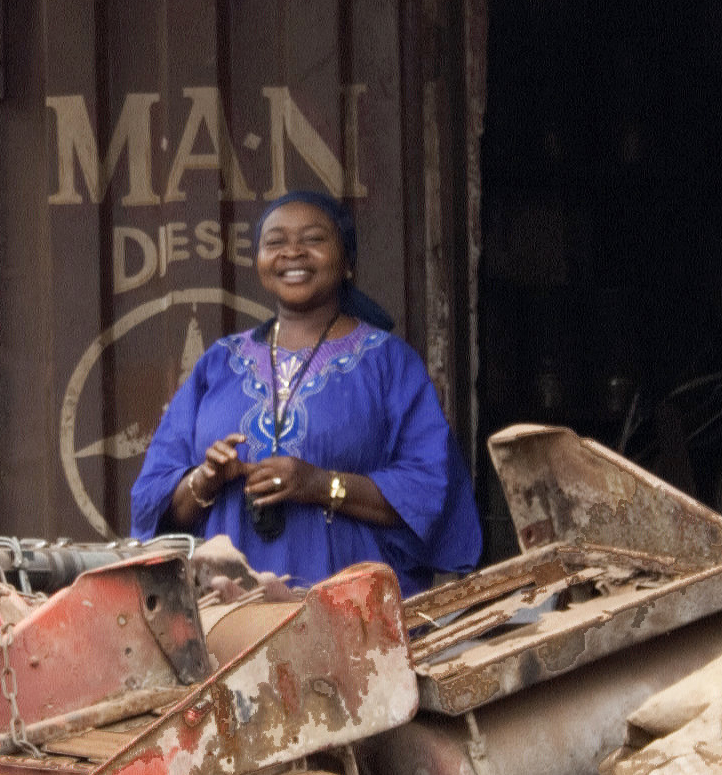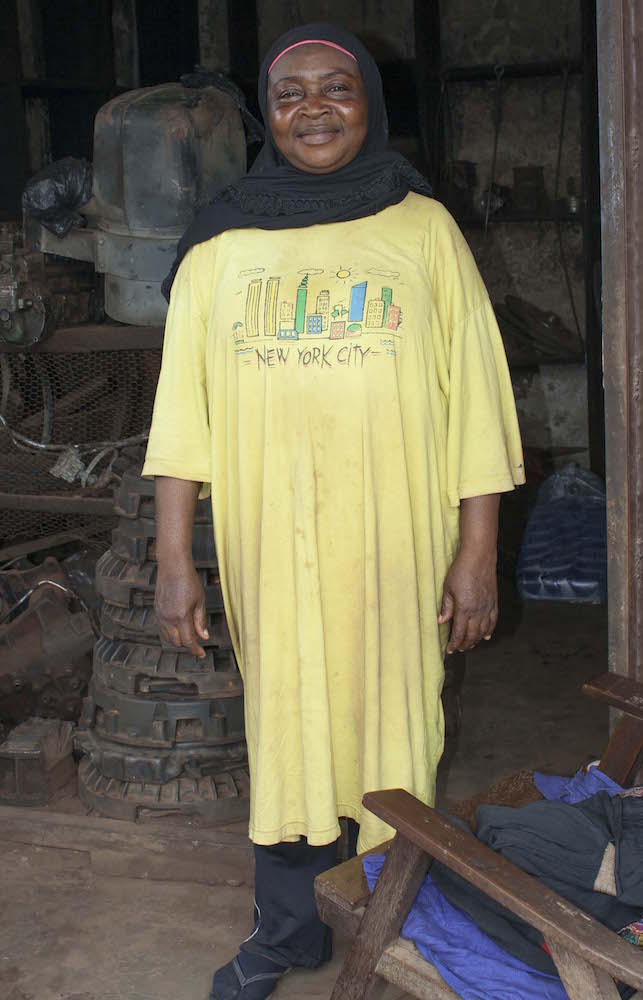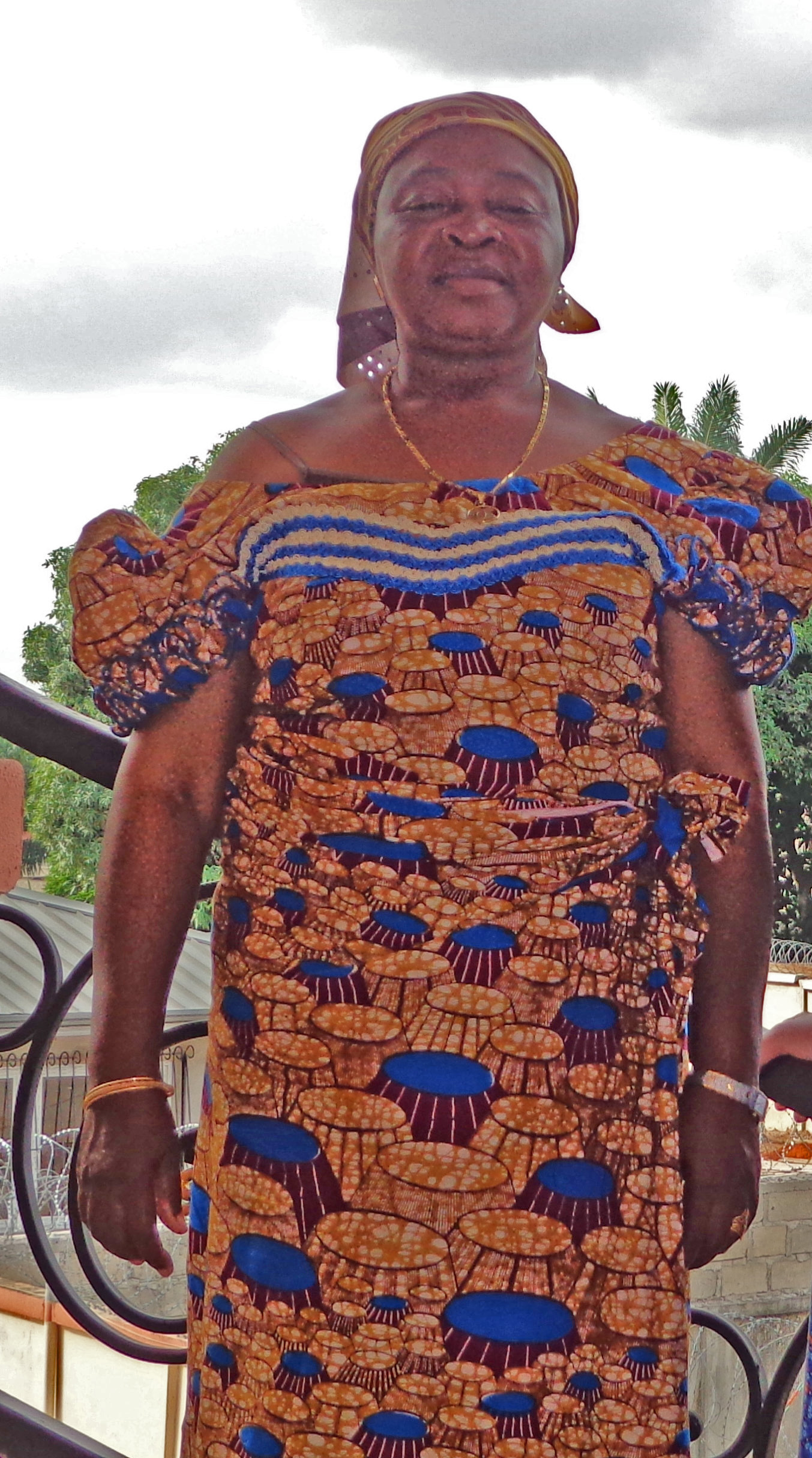Public Face of Islam in Kumasi
By Gracia Clark
Placeholder text -- for Women
Format: Image-MovingImage/mp4
Since the 1970s, a faction has been growing in Kumasi who adhere to more fundamentalist visions of Islam that condemn “unnecessary’’ prayers and rituals added to those prescribed by the Koran. Among those criticized are senior leaders in the Sufi brotherhoods, who offer special blessings and protections to their devout followers. Most of the established families of chiefs and imams in Ghana have historically been affiliated with the Khadiyya brotherhood, and look to North African centers for further education and religious authority. The Mohammediyya, as they call themselves, consider the Koran itself sufficient instruction and all other practices superstitious if not heretical. They particularly criticize the practice of pilgrimages to the graves of saintly Sufi figures in Senegal and Morocco, since only the pilgrimage to Mecca is mandated in the Koran. Exposure to Saudi authorities and practices has spread through the experience of youth traveling to Arabia on the prized scholarships given for secular university or Islamic study. Recordings of Saudi or other fundamentalist preachers also win many adherents, and Saudi Arabia has built and staffed many mosques within Ghana. Rivalries between the two camps have grown tense and occasionally trigger violent confrontations. The Mohammediyya, often younger and from less prominent Zongo families, sometimes preach openly against cherished traditional practices and leaders. Even without naming names, the younger relatives and followers of the traditional leaders will defend their reputations with insults and fists. They accuse the Mohammediyya of not respecting their elders, a Koranic mandate, while the more radical new preachers hint of magic charms and interpret as sorcery such practices as writing verses of the Koran on a slate, then washed off and drunk by the petitioner. The most serious expression of separatism came when the Mohammediyya established their own mosque for Friday Prayers, breaking the most fundamental symbol of unity for Kumasi Muslims. Other Kumasi Muslims who sympathize with their beliefs still attend Friday Prayers at the Central Mosque and lament the split. The dissidents claimed that praying behind the community elders risked weakening or contaminating their prayers, if that particular elder happened to be among those engaging in dubious magical rituals. Holding a separate prayer service to celebrate Eid al-Fitr, suggesting that the Chief Imam even holds his on the wrong day, makes a very conspicuous statement to fellow Muslims and the city at large.
Format: Image-MovingImage/mp4
Video Footage Scene Comments Start (00:00:00) Families returning from the noon prayer at Kumasi Central Mosque on Eid-al-Fitr, 2011. 00:00:12 The followers of a popular local teacher surround him and his family, as the last vehicles allowed pass. 00:01:16 Note hawkers with head loads and pushcarts as the street clears. Pairs of young men and sets of women walk along. 00:01:40 Boys claiming good viewing positions near local vendors' tables and kiosks. 00:02:15 The first chiefs' umbrellas come into view at the top of the street. Community members crowd the street and watch from uncompleted buildings. 00:02:25 Muslim chiefs riding on trucks, using Asante-style umbrellas and wearing richly embroidered robes, typically Hausa. Their crowds of followers merge with onlookers. One group wears matching cloths and headscarves in bright green, a color favored by the Prophet. 00:03:31 Important attendant rides a horse, a very expensive luxury in this climate. A chief in Fulani-style dress with green veil displays a less Islamic ethnic tableau on the roof of the truck cab. Children in matching outfits ride in back. 00:03:40 Women and chief dancing on truck. Fly whisks made of horse's mane. 00:03:54 Upper Region ethnic drumming and dance. Men in smocks, some women in "traditional" non-Islamic dress. 00:04:25 Women in green uniform cloth with headscarves and/or lace veils dancing together. Men playing trombones. 00:05:00 Street level views of uniforms, hawkers. 00:05:20 Banner carried by constituents of local chief of Yoruba immigrants. 00:05:36 Young man in white brocade, showing off his horsemanship---or not. 00:06:00 Northern Region chief in embroidered smock, dancing for the crowd. 00:06:30 Ethnic chief of Upper Region residents in Kumasi. His Asante-style headband has gold medallions, and he wears a metallic brocade robe over a handwoven white and indigo smock. Followers hold banner with portraits of male and female leaders. 00:06:58 Sub-chiefs on horses with young sons riding in front. Note policemen passing by. 00:07:29 Zongo chief riding horse with gold trappings, in white flowing robes One set of palace guards wears red turbans, other elders in other matching turbans or outfits. Note men taking photos, two men holding umbrellas. Regalia include silver helmet, sheer lace veils on men and horse. 00:09:30 Crowds seen from our rooftop perch. Kente cloth umbrella in center shades the Asantehemma. Pickup trucks outnumber horses. Note slow and halting pace of parade, allowing more dancing. Men and women in casual modern dress join in. 00:12:00 Brass band with snare and bass drum. Good dancers show off for friends taking video. 00:13:14 Expert dancers from Upper Region whirl their heavy smocks, to music from traditional drums and clay flutes. 00:14:43 Drummer dances up to a "big man" in smock, who puts paper money on the drummer's forehead and then joins in the dancing. A young woman in "generic modern Ghanaian" pink cloth outfit tips drummer, then waves her pink purse and white handkerchief at "big man." When she starts dancing, he tips her liberally.
Format: Image-MovingImage/mp4
Weddings are some of the most important family ceremonies in most cultures, and especially for Muslims because their religion calls for relatively simple funerals. In Ghana, as in much of West Africa, the bride and her mother demonstrate and bolster their social status by accumulating an impressive array of cloth and household items which the bride takes to her marital home. Displaying these goods, usually called a dowry, remains a prominent feature of the event even when the goods themselves include more that appeal to modern than traditional aspirations. Both mothers and teenage daughters in Kumasi can join special mutual savings groups that collect money in anticipation of the girls’ weddings. This wedding takes place in one of the older Muslim suburbs and provides a good example of the melding of traditional and modern elements. The ceremony begins with women kin and friends of the bride dancing in front of a huge display of furniture, electric appliances, suitcases, clothing and stacks of serving dishes. Members of the savings group dance wearing their uniform-a brown polo shirt with the name of the group printed on it. Other participants wear a variety of old and new fashions. The commentary of a master of ceremonies, speaking with a microphone, adds glamour to the atmosphere. Meanwhile, the groom is praying with male members of both families at a nearby mosque to solemnize the marriage. The festivities climax with the entry of the bride, not wearing white but some of her colorful new clothes. Her friends and family drop money on the ground before her, which a young attendant deftly collects before she steps on it. She meets the groom under an arch of balloons, where they dance together rather awkwardly before both turning to dance more comfortably with their familiar companions.
Format: Image-MovingImage/mp4
Several months before it was time to start on the Hajj pilgrimage to Mecca, members of this mosque in Kumasi who had made the pilgrimage decided to stage this reenactment of the various stages of the ritual, so that those going that year would know what to expect. Since the pageant took place inside the mosque itself, its degree of realism was limited, but the coordinators took care to preserve the correct sequence of events. Quite a large group acted as the pilgrims and arrived by plane, settled at their camping site, mimed cleansing themselves and changed into white pilgrim garb. All those from Ghana would camp together, and some had Ghana or its flag on their uniforms. Cardboard models of rocky heights were placed strategically around the room, where the pilgrims would cast away the devil and visit the site where Abraham had offered to sacrifice Isaac. An ornately decorated cube in the center represented the Q'aba, which both male and female groups circled a number of times, as the ritual climax. The scene was somewhat chaotic, with various people shouting instructions, but it also served to popularize the pilgrimage among those who had not planned to go.
Format: Image-MovingImage/mp4
Mallam Zacharia Rahmen tells two stories. The first is the story of Lot and his wife at Sodom. God sent his angel to warn Lot that he was going to destroy the earth because of the promiscuous behavior going on. He warned Lot to leave with his family and not look back, but when Lot's wife turned around, she turned into a pillar of salt. Mallam uses this story to preach against homosexuality. The second story is of Noah and the ark. Again, God wanted to rid the world of unbelievers and idol worshipers but preserve the believers on the ship. All those who did not board the ship perished in the flood. Quote: "It is ugly, it [homosexuality and promiscuity] makes God angry, but that is what's going on, Bantama some are here, Suame some are there, Asafo some are there, everywhere in Ghana you go some are there, God forbid, they are all over."
A variety of dress styles Hajia Habiba appropriately wears in public.
Format: Image-StillImage/jpeg
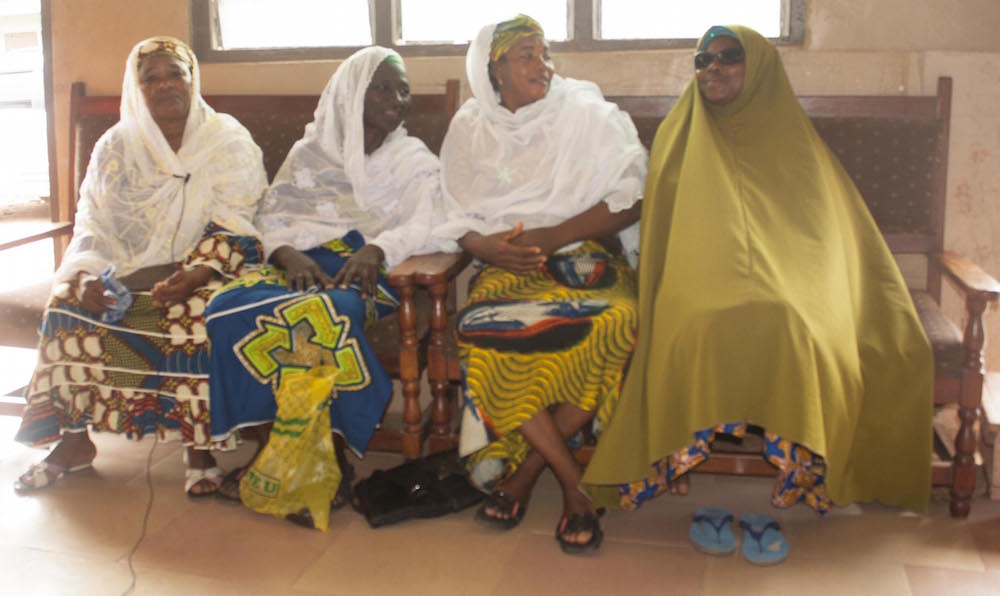
Sisters and wives of the Mossi chief's household with friends.
A range of dress styles that express modesty and Islamic faith
Format: Image-StillImage/jpeg
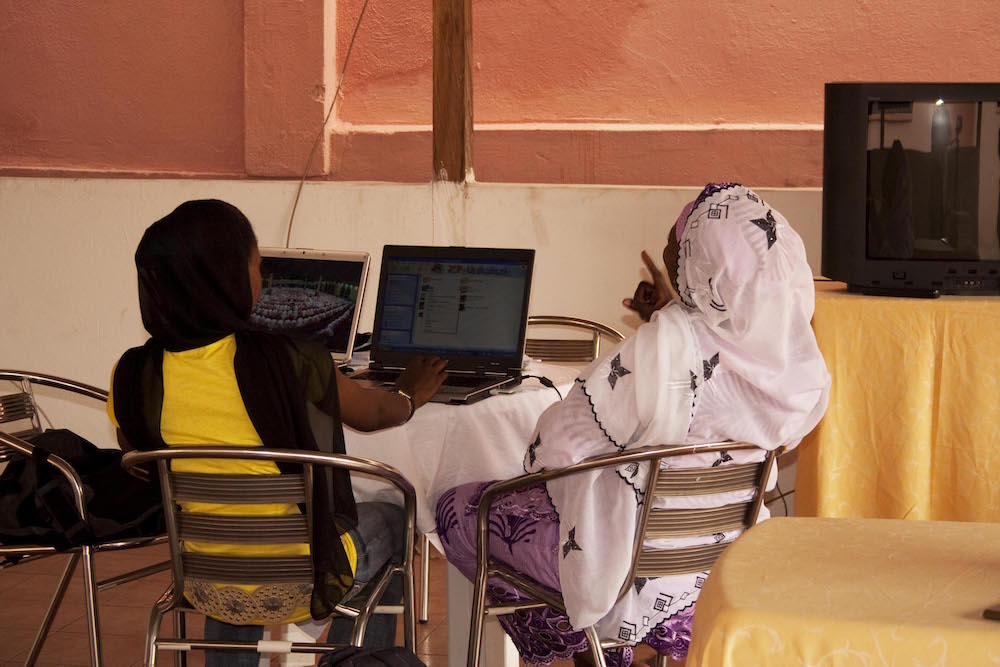
Devout university graduates working on interview translations.
Alternative Eid
Date: August 2011Format: Image-MovingImage/mp4
Since the 1970s, a faction has been growing in Kumasi who adhere to more fundamentalist visions of Islam that condemn “unnecessary’’ prayers and rituals added to those prescribed by the Koran. Among those criticized are senior leaders in the Sufi brotherhoods, who offer special blessings and protections to their devout followers. Most of the established families of chiefs and imams in Ghana have historically been affiliated with the Khadiyya brotherhood, and look to North African centers for further education and religious authority. The Mohammediyya, as they call themselves, consider the Koran itself sufficient instruction and all other practices superstitious if not heretical. They particularly criticize the practice of pilgrimages to the graves of saintly Sufi figures in Senegal and Morocco, since only the pilgrimage to Mecca is mandated in the Koran. Exposure to Saudi authorities and practices has spread through the experience of youth traveling to Arabia on the prized scholarships given for secular university or Islamic study. Recordings of Saudi or other fundamentalist preachers also win many adherents, and Saudi Arabia has built and staffed many mosques within Ghana. Rivalries between the two camps have grown tense and occasionally trigger violent confrontations. The Mohammediyya, often younger and from less prominent Zongo families, sometimes preach openly against cherished traditional practices and leaders. Even without naming names, the younger relatives and followers of the traditional leaders will defend their reputations with insults and fists. They accuse the Mohammediyya of not respecting their elders, a Koranic mandate, while the more radical new preachers hint of magic charms and interpret as sorcery such practices as writing verses of the Koran on a slate, then washed off and drunk by the petitioner. The most serious expression of separatism came when the Mohammediyya established their own mosque for Friday Prayers, breaking the most fundamental symbol of unity for Kumasi Muslims. Other Kumasi Muslims who sympathize with their beliefs still attend Friday Prayers at the Central Mosque and lament the split. The dissidents claimed that praying behind the community elders risked weakening or contaminating their prayers, if that particular elder happened to be among those engaging in dubious magical rituals. Holding a separate prayer service to celebrate Eid al-Fitr, suggesting that the Chief Imam even holds his on the wrong day, makes a very conspicuous statement to fellow Muslims and the city at large.
City Parade
Date: August 2011Format: Image-MovingImage/mp4
Video Footage Scene Comments Start (00:00:00) Families returning from the noon prayer at Kumasi Central Mosque on Eid-al-Fitr, 2011. 00:00:12 The followers of a popular local teacher surround him and his family, as the last vehicles allowed pass. 00:01:16 Note hawkers with head loads and pushcarts as the street clears. Pairs of young men and sets of women walk along. 00:01:40 Boys claiming good viewing positions near local vendors' tables and kiosks. 00:02:15 The first chiefs' umbrellas come into view at the top of the street. Community members crowd the street and watch from uncompleted buildings. 00:02:25 Muslim chiefs riding on trucks, using Asante-style umbrellas and wearing richly embroidered robes, typically Hausa. Their crowds of followers merge with onlookers. One group wears matching cloths and headscarves in bright green, a color favored by the Prophet. 00:03:31 Important attendant rides a horse, a very expensive luxury in this climate. A chief in Fulani-style dress with green veil displays a less Islamic ethnic tableau on the roof of the truck cab. Children in matching outfits ride in back. 00:03:40 Women and chief dancing on truck. Fly whisks made of horse's mane. 00:03:54 Upper Region ethnic drumming and dance. Men in smocks, some women in "traditional" non-Islamic dress. 00:04:25 Women in green uniform cloth with headscarves and/or lace veils dancing together. Men playing trombones. 00:05:00 Street level views of uniforms, hawkers. 00:05:20 Banner carried by constituents of local chief of Yoruba immigrants. 00:05:36 Young man in white brocade, showing off his horsemanship---or not. 00:06:00 Northern Region chief in embroidered smock, dancing for the crowd. 00:06:30 Ethnic chief of Upper Region residents in Kumasi. His Asante-style headband has gold medallions, and he wears a metallic brocade robe over a handwoven white and indigo smock. Followers hold banner with portraits of male and female leaders. 00:06:58 Sub-chiefs on horses with young sons riding in front. Note policemen passing by. 00:07:29 Zongo chief riding horse with gold trappings, in white flowing robes One set of palace guards wears red turbans, other elders in other matching turbans or outfits. Note men taking photos, two men holding umbrellas. Regalia include silver helmet, sheer lace veils on men and horse. 00:09:30 Crowds seen from our rooftop perch. Kente cloth umbrella in center shades the Asantehemma. Pickup trucks outnumber horses. Note slow and halting pace of parade, allowing more dancing. Men and women in casual modern dress join in. 00:12:00 Brass band with snare and bass drum. Good dancers show off for friends taking video. 00:13:14 Expert dancers from Upper Region whirl their heavy smocks, to music from traditional drums and clay flutes. 00:14:43 Drummer dances up to a "big man" in smock, who puts paper money on the drummer's forehead and then joins in the dancing. A young woman in "generic modern Ghanaian" pink cloth outfit tips drummer, then waves her pink purse and white handkerchief at "big man." When she starts dancing, he tips her liberally.
Modern Wedding
Date: March 2012Format: Image-MovingImage/mp4
Weddings are some of the most important family ceremonies in most cultures, and especially for Muslims because their religion calls for relatively simple funerals. In Ghana, as in much of West Africa, the bride and her mother demonstrate and bolster their social status by accumulating an impressive array of cloth and household items which the bride takes to her marital home. Displaying these goods, usually called a dowry, remains a prominent feature of the event even when the goods themselves include more that appeal to modern than traditional aspirations. Both mothers and teenage daughters in Kumasi can join special mutual savings groups that collect money in anticipation of the girls’ weddings. This wedding takes place in one of the older Muslim suburbs and provides a good example of the melding of traditional and modern elements. The ceremony begins with women kin and friends of the bride dancing in front of a huge display of furniture, electric appliances, suitcases, clothing and stacks of serving dishes. Members of the savings group dance wearing their uniform-a brown polo shirt with the name of the group printed on it. Other participants wear a variety of old and new fashions. The commentary of a master of ceremonies, speaking with a microphone, adds glamour to the atmosphere. Meanwhile, the groom is praying with male members of both families at a nearby mosque to solemnize the marriage. The festivities climax with the entry of the bride, not wearing white but some of her colorful new clothes. Her friends and family drop money on the ground before her, which a young attendant deftly collects before she steps on it. She meets the groom under an arch of balloons, where they dance together rather awkwardly before both turning to dance more comfortably with their familiar companions.
Pageant Enacting the Haj
Date: November 2011Format: Image-MovingImage/mp4
Several months before it was time to start on the Hajj pilgrimage to Mecca, members of this mosque in Kumasi who had made the pilgrimage decided to stage this reenactment of the various stages of the ritual, so that those going that year would know what to expect. Since the pageant took place inside the mosque itself, its degree of realism was limited, but the coordinators took care to preserve the correct sequence of events. Quite a large group acted as the pilgrims and arrived by plane, settled at their camping site, mimed cleansing themselves and changed into white pilgrim garb. All those from Ghana would camp together, and some had Ghana or its flag on their uniforms. Cardboard models of rocky heights were placed strategically around the room, where the pilgrims would cast away the devil and visit the site where Abraham had offered to sacrifice Isaac. An ornately decorated cube in the center represented the Q'aba, which both male and female groups circled a number of times, as the ritual climax. The scene was somewhat chaotic, with various people shouting instructions, but it also served to popularize the pilgrimage among those who had not planned to go.
Ramadan Class for Bantama Women's Group
Date: September 6, 2009Format: Image-MovingImage/mp4
Mallam Zacharia Rahmen tells two stories. The first is the story of Lot and his wife at Sodom. God sent his angel to warn Lot that he was going to destroy the earth because of the promiscuous behavior going on. He warned Lot to leave with his family and not look back, but when Lot's wife turned around, she turned into a pillar of salt. Mallam uses this story to preach against homosexuality. The second story is of Noah and the ark. Again, God wanted to rid the world of unbelievers and idol worshipers but preserve the believers on the ship. All those who did not board the ship perished in the flood. Quote: "It is ugly, it [homosexuality and promiscuity] makes God angry, but that is what's going on, Bantama some are here, Suame some are there, Asafo some are there, everywhere in Ghana you go some are there, God forbid, they are all over."
One Women, Three Contexts
Format: Image-StillImage/jpegA variety of dress styles Hajia Habiba appropriately wears in public.
Women Relatives
Date: 2014Format: Image-StillImage/jpeg

Sisters and wives of the Mossi chief's household with friends.
Women Slideshow
Format: Image-StillImage/jpegA range of dress styles that express modesty and Islamic faith
Young Educated Women
Date: 2012Format: Image-StillImage/jpeg

Devout university graduates working on interview translations.
